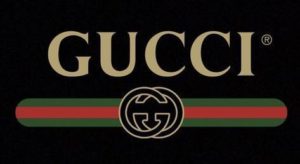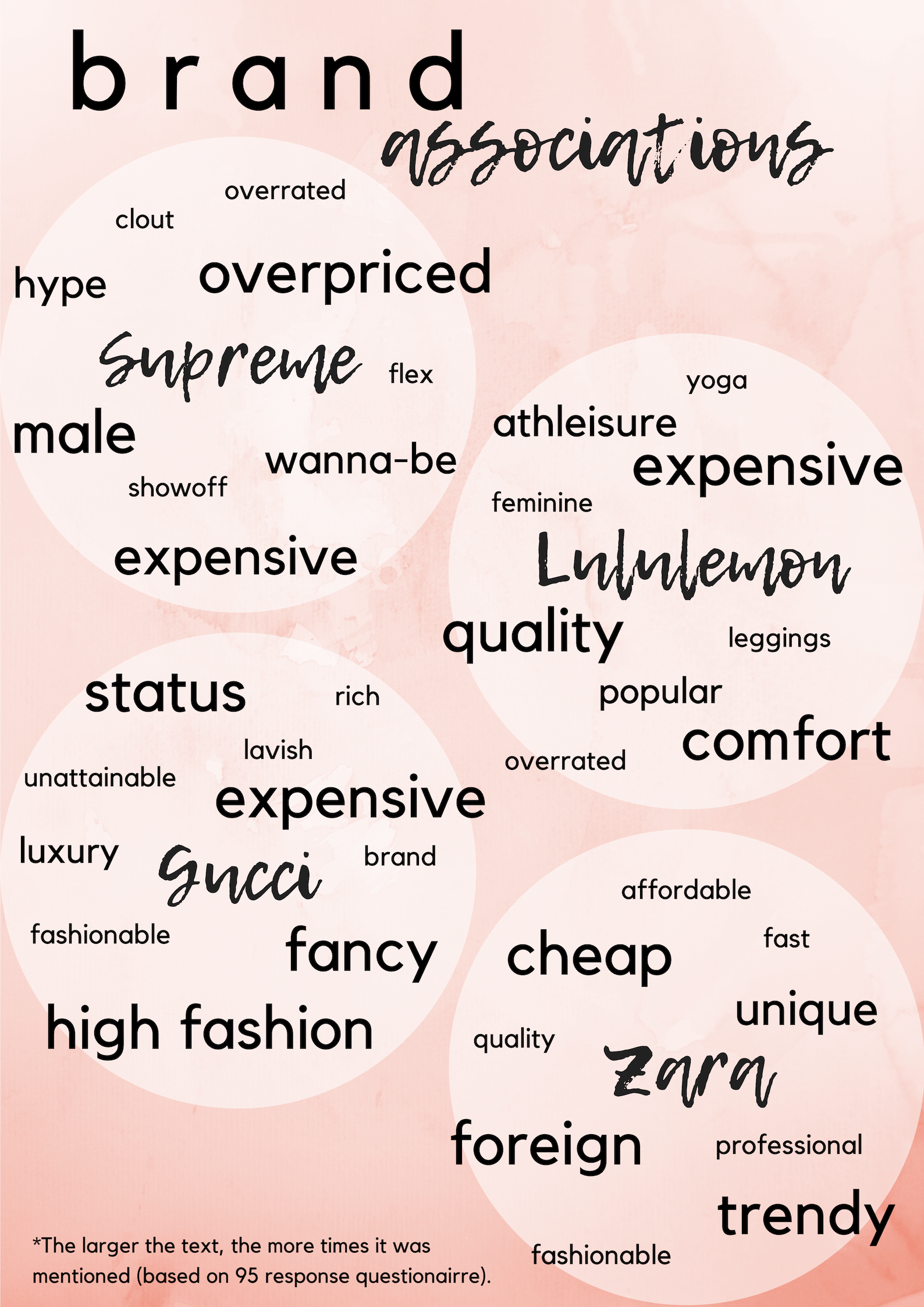What’s in a name?
I have always been curious about brands. They flash across shirts, down pants, and, with brands like Supreme, even on bricks. Now, don’t get me wrong; I’ve fed into it too, but why? What is the big deal with brand names? Why are they something that the media has constantly played into? Is it a big money game or is there really something behind these brands?
As fashion has such a big impact on our identity, it is no doubt that these brands must mean something to us or say something about us when we wear them. It’s no doubt that when one thinks of brands like Valentino or Armani, Gucci or Prada, you think of high fashion. And not only that, but you think about a history of showcasing style and maybe having a little extra cash to burn. But in terms of brands like Supreme, that have only begun to get famous in recent years, what does this mean to people? It was built from the ground up in an extremely short amount of time; yet, you can find their items being resold for hundreds more than the original value. Is it really about the brand or is it just the “limited” quantity that makes it so worthwhile? And then, of course, there are brands like PINK or even more recently, Lululemon. What do those say about the person wearing them? I’m fit. What I’m wearing is expensive. Or do these brands mean more about fitting in than standing out?
Not only do I want to try to discover the underlying meaning behind the bolstered brands we wear, but I want to discover the differences between them. Even past the individual, I want to look at what this looks like for different cultures across our world. What’s really in a name?

The Basics
For this product, I decided to look into three brands of varying cost, accessibility, and age to help guide my research on how consumers identify with the brands they wear. The three brands I chose were Gucci, Lululemon, Supreme, and Zara.
- Gucci
Gucci is an Italian luxury brand of fashion and leather goods founded in 1921 in Florence, Italy by Guccio Gucci. As an immigrant hotel worker, he was impressed by all the luxury luggage he saw flowing in and out of the hotel. Upon returning to his birthplace of Florence, a city distinguished for high-quality materials and skilled artisans, he established a shop in 1920 that sold fine leather goods with classic styling. Gucci is known in female fashion for its high quality and recognizable label featured on shoes, belts, hats, and everything in between. Gucci also does male clothes, though, they are not quite as popular. Gucci is estimated to be worth around 12.5 billion US dollars.

- Supreme
Supreme was founded in 1994 out of SoHo by James Jebbia. In his teen years, he spent his spare cash on trips to London to buy clothes from stores that would one day become the inspiration for Supreme. “The shop that carries the cool stuff that everybody was wearing—no big brands or anything” Jebbia, 54, stated of his childhood endeavors. Supreme, from its formation, focuses at clothing, shoes, accessories, and skateboards. As the brand has gained more popularity, we see this growing to reach household items, one of their latest items to “drop” being an ax. The popularity, or hype, surrounding the brand is directly correlated to the limited quantity and limited time to buy. The total equity of the brand is currently one billion US dollars.

- Lululemon
Lululemon was founded by Chip Wilson in Vancouver, Canada in 1998 as a yoga-inspired, technical athletic apparel company for women and men. “We wanted to create a community hub where people could learn and discuss the physical aspects of healthy living, mindfulness and living a life of possibility”. Lululemon is credited for growing the popularity of athleisure, where clothing designed for working out is worn for everyday use, with Lulu’s leggings being a major draw for their consumers. Their net worth is currently unknown.

- Zara
Zara is a Spanish fast fashion company that was founded in 1975 by Amancio Ortega and Rosalía Mera. It is the main brand of the Inditex group, the world’s largest apparel retailer. In 1988, the company started its international expansion through Porto, Portugal. In 1989, it entered the United States, and then France in 1990. Zara stores have men’s and women’s clothing, as well as children’s clothing (Zara Kids). Since it is based in Spain, the styles tend to be very European and often anticipate trends that later gain popularity in the US. Zara is estimated to be valued at around 13 billion US dollars.

The Research
Since my idea was quite specific, it was very hard to accumulate data from outside sources. Therefore, I decided it best to collect research of my own. I created an 11 question google form that was distributed to the Vandy community through GroupMes and facebook posts. The form I used is below.




Thankfully, about 100 students filled out the questionnaire which I believe is enough to make this research viable in order to extrapolate inferences from it. Below, I compiled the data in a graphic in order to make the outcomes of my research quite visible.

As you can see, most college students believe that what you wear definitely has something to say about the person you are. But then again, lots of college students don’t have a ton of cash to burn so when it comes down to it, they are looking for quality and quantity over brand or style. This translates into the next graphic, where a lot of the verbiage used to describe said brands revolves heavily around price.

And while college students said they would do an average amount of judging on someone’s attire, it seemed they had a lot to say (and not always nice things, I may add) about the four brands I focused my project on.
The Conclusion
That all being said, whether we like it or not, the clothes we wear can say a lot about us. From the actual style of clothes we wear to the brands we rep while wearing them, everyone has a notion or description associated with a brand. As we can see, people have very different (and quite strong) opinions about brands that are currently in the public eye. But at the end of the day, you have to wear what works for you. The things that make you feel good; styles that work for your body and your budget.
